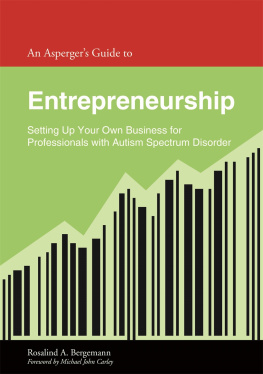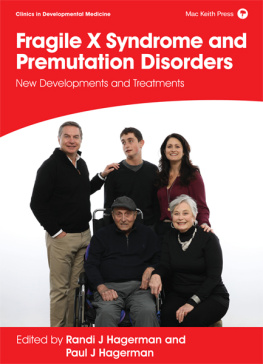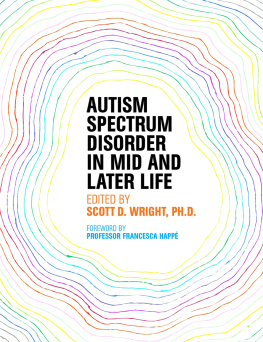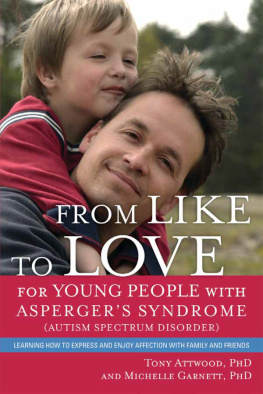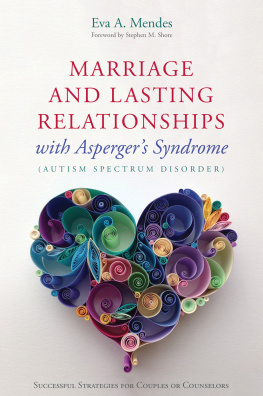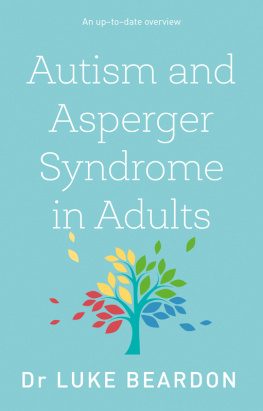also in this series
Understanding Facial Recognition Difficulties in Children
Prosopagnosia Management Strategies for Parents and Professionals
Nancy L. Mindick
Foreword by Glenn Alperin
ISBN 978 1 84905 802 5
eISBN 978 0 85700 494 9
Understanding Regulation Disorders of Sensory Processing in Children
Management Strategies for Parents and Professionals
Pratibha Reebye and Aileen Stalker
ISBN 978 1 84310 521 3
eISBN 978 1 84642 714 5
Understanding Motor Skills in Children with Dyspraxia, ADHD, Autism, and Other Learning Disabilities
A Guide to Improving Coordination
Lisa A. Kurtz
ISBN 978 1 84310 865 8
eISBN 978 1 84642 672 8
Understanding Controversial Therapies for Children with Autism, Attention Deficit Disorder, and Other Learning Disabilities
A Guide to Complementary and Alternative Medicine
Lisa A. Kurtz
ISBN 978 1 84310 864 1
eISBN 978 1 84642 761 9
Understanding Nonverbal Learning Disabilities
A Common-Sense Guide for Parents and Professionals
Maggie Mamen
ISBN 978 1 84310 593 0
eISBN 978 1 84642 674 2
Understanding Fragile X Syndrome
A Guide for Families and Professionals
Isabel Fernndez Carvajal and David Aldridge

Jessica Kingsley Publishers
London and Philadelphia
Epigraph from Garca Mrquez 1967 on p.5 is reproduced by permission of Agencia Literaria Carmen Balcells.
from Hagerman et al. 2008 on p.50 is reproduced by permission of Randi Hagerman.
First published in 2011
by Jessica Kingsley Publishers
73 Collier Street
London N1 9BE, UK
and
400 Market Street, Suite 400
Philadelphia, PA 19106, USA
www.jkp.com
Copyright Isabel Fernndez Carvajal and David Aldridge 2011
All rights reserved. No part of this publication may be reproduced in any material form (including photocopying or storing it in any medium by electronic means and whether or not transiently or incidentally to some other use of this publication) without the written permission of the copyright owner except in accordance with the provisions of the Copyright, Designs and Patents Act 1988 or under the terms of a licence issued by the Copyright Licensing Agency Ltd, Saffron House, 610 Kirby Street, London EC1N 8TS. Applications for the copyright owners written permission to reproduce any part of this publication should be addressed to the publisher.
Warning: The doing of an unauthorised act in relation to a copyright work may result in both a civil claim for damages and criminal prosecution.
Library of Congress Cataloging in Publication Data
Fern?ndez Carvajal, Isabel.
Understanding fragile X syndrome : a guide for families and professionals / Isabel Fern?ndez Carvajal and David Aldridge.
p. ; cm. -- (JKP essentials)
Includes bibliographical references and index.
ISBN 978-1-84310-991-4 (alk. paper)
1. Fragile X syndrome. I. Aldridge, David, 1947- II. Title. III. Series: JKP essentials.
[DNLM: 1. Fragile X Syndrome. 2. Ataxia--genetics. 3. Tremor--genetics. QS 677]
RJ506.F73F47 2011
616.85884--dc22
2010046069
British Library Cataloguing in Publication Data
A CIP catalogue record for this book is available from the British Library
ISBN 978 1 84310 991 4
eISBN 978 0 85700 437 6
To the memory of Antonio
There is always something left to love
Gabriel Garca Mrquez
One Hundred Years of Solitude
London: Jonathan Cape, 1967
List of Figures, Tables and Boxes
Figures
Tables
Boxes
Chapter 1
WHAT IS FRAGILE X SYNDROME?
When Samuel is born he is a lovely baby boy. When he is eight months old his parents become worried because he doesnt seem to be developing as they expect. Something does not appear to be quite right about their baby. He has difficulty in sitting unsupported and then he is not able to crawl. His development milestones, like walking, do not appear as in other children of a similar age. The family doctor tells the parents, Do not worry, some children develop later. Just be patient. The parents are patient but still retain their suspicions that something is wrong with their child. Eventually Samuel begins to walk, but by the age of two years his parents are concerned that he is not talking. Again, the family doctor tells them not to worry as language often comes later.
Eventually Samuel does speak a few words, like Mama and Papa, and can echo words that are said to him. By the time he is four years old and ready for infant school, his developmental delay becomes clear. In contrast to his peers, his communicative abilities are limited and Samuels teacher has difficulties in integrating Samuel in the classroom because he is constantly active. Samuel has difficulty maintaining the attention he needs to learn in the classroom and to relate to his classroom peers. His teacher calls his parents and tells them of her concerns about his language difficulties and his relational problems. She says that it is difficult to teach Samuel because of his limited attention and constant activity. This is when Samuel is referred to a specialist, in this case a neuro-paediatrician.
The neuro-paediatrician diagnoses that Samuel has an autism spectrum disorder and prescribes medication for controlling Samuels hyperactivity.
Meanwhile, Samuel has a new baby brother, Julian. Samuels condition does not improve. He has psychological problems in school and it becomes clear that other children are bullying him because of his disabilities. On referral to a child psychologist, his parents are told that the problems are a result of Samuel being jealous of his new baby brother.
When Samuel is six years old, the family seek further help in the nearest large city from a specialist in child intellectual disability. Reviewing Samuels appearance, developmental history and behaviour, including his school difficulties, the specialist decides to carry out a genetic test. The results of the test show that Samuel has Fragile X syndrome.
On the basis of this test, the doctor asks if there are other siblings. As we have seen, Samuels baby brother Julian is now part of the family, and the parents have the same concerns about him that they had about Samuel. Julian does not appear to be developing as they expect and the doctor decides to carry out the genetic test. Julian proves also to have Fragile X syndrome. The parents had no idea beforehand that this was a problem in their respective families.
The child specialist then sends the parents to a genetic counsellor as they need to be aware of their own genetic status before they decide whether to have further children. The counsellor will ask them about their own families of origin and previous problems of developmental delay even medical problems that their grandparents have. If the parents had known earlier that a second child could be affected by Fragile X syndrome, their decision to have the child might have been affected.
As the reader will see, the genetic problem of Fragile X can be tested quite easily. The ramifications for Samuel, Julian, their parents and the rest of the family, however, are complex. These are not medical decisions alone but serious ethical, familial and social decisions, which include informed decision-making about family planning knowing that there is a possibility of disability for any subsequent children.
BACKGROUND
Fragile X syndrome is the most common form of inherited developmental disability even though is often under-diagnosed. The syndrome is caused by a change in the genetic make-up itself, as we will . It was known formerly as Martin-Bell syndrome, named after the physician, James Purdon Martin, and the geneticist, Julia Bell, who first discovered it in 1943. Although we have known about the syndrome for over 60 years, there is still a limited awareness of the problem, even amongst health care practitioners, as it affects both children and adults.
Next page


